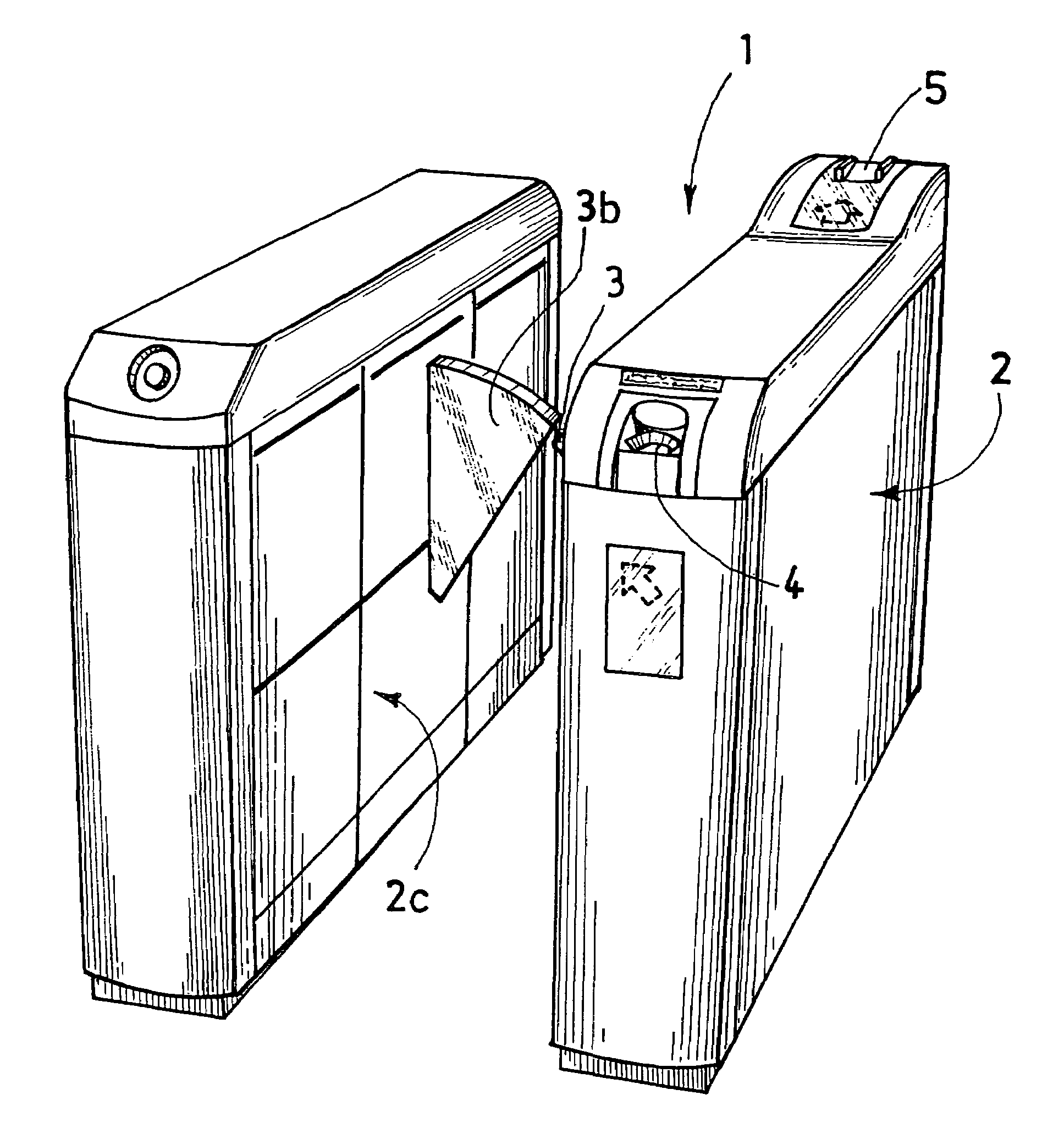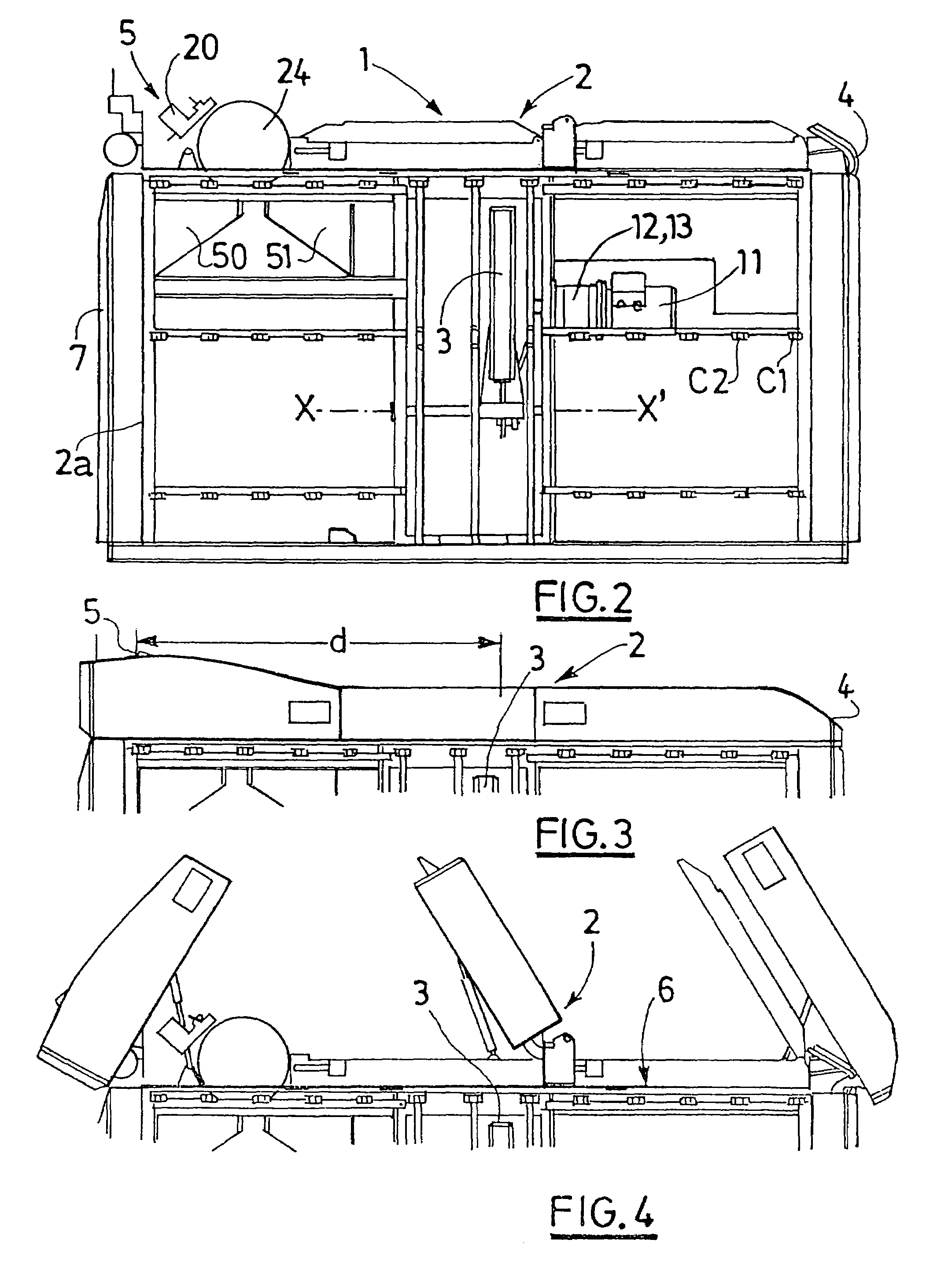Automatic gate and associated method for permitting or preventing access
a technology of automatic gate and associated method, applied in the field of automatic gate, can solve the problems of obstructing the passage, irritating passengers, and inability to operate normally, and achieve the effects of avoiding the damage of glass barriers
- Summary
- Abstract
- Description
- Claims
- Application Information
AI Technical Summary
Benefits of technology
Problems solved by technology
Method used
Image
Examples
Embodiment Construction
[0070]In the embodiment represented in FIGS. 1 to 5, the automatic gate 1 for permitting or preventing access to a space or a transport vehicle, in particular to a boarding lounge or an aeroplane, comprises a vertical and elongated frame 2 constituting a closed box in the shape of a parallelepiped. This frame 2 carries a flap 3 which is mobile between a closed position (see FIG. 5) in which this flap 3 forms a barrier preventing the passage of a passenger along the frame 2 and an open position in which the flap 3 allows this passage.
[0071]The upstream end of the frame 2 relative to the direction of movement of the passenger comprises, close to the upper face of the frame, an input slot 4 for an access ticket and the downstream end of the frame 2 comprises, on the upper face of the frame, an output slot 5 for this ticket. The frame 2 contains means which are described in detail hereafter for controlling the displacement of the flap 3 between the two abovementioned positions. The fram...
PUM
 Login to View More
Login to View More Abstract
Description
Claims
Application Information
 Login to View More
Login to View More - R&D
- Intellectual Property
- Life Sciences
- Materials
- Tech Scout
- Unparalleled Data Quality
- Higher Quality Content
- 60% Fewer Hallucinations
Browse by: Latest US Patents, China's latest patents, Technical Efficacy Thesaurus, Application Domain, Technology Topic, Popular Technical Reports.
© 2025 PatSnap. All rights reserved.Legal|Privacy policy|Modern Slavery Act Transparency Statement|Sitemap|About US| Contact US: help@patsnap.com



